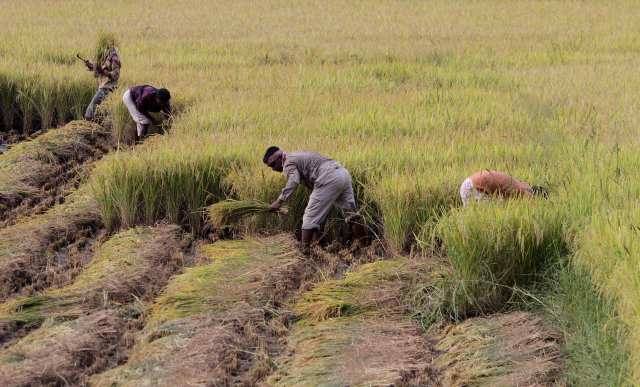
Industrial-style farming, often known as the “green revolution” has been widely credited with saving perhaps 1 billion people from starvation by boosting the yield of grain crops in India, China, Pakistan, Mexico and other countries.
But the green revolution, which relies on intensive use of water, fertilizer, pesticides and energy, has come at a cost, the United Nations Food and Agriculture Organization says. The FAO tally of such costs include anemic soils, depleted water supplies, diminished biodiversity, resilient pests, super weeds and polluted air, water and soil.
Now the U.N. agency, tasked with solving world hunger, has thrown its support behind wider use of “sustainable agriculture” in the developing world. It has issued a new primer, “Save and Grow,” specifically targeting the 2.5 billion people who scratch out a living on small farms throughout Asia, Africa and Latin America.
The big idea? That humanity cannot just rely on intensified ag practices that require ever more powerful pesticides, fertilizers and genetically designed seeds to feed the world’s burgeoning population. Experts predict farmers will need to double production to feed a global population that will add more than 2 billion more people by midcentury.
“In order to grow, agriculture must learn to save,” the FAO reports. That means preserving soil’s natural fertility by minimizing ploughing, and recycling crop waste to enrich the earth. It means smarter, integrated way of managing pests, rotating crops, and greater precision in the use of fertilizer and drip irrigation, the book authors say.
Some studies show that farmers can get bumper crops if they follow these practices and, at the same time, save water, energy and other costs.
To be sure, the developing world’s farmers get mixed messages about how to coax more from their small plots of land. It remains to be seen how far the FAO’s new advice can reach into the most remote places.
Yet “Save and Grow,” available in six languages, already has lined up the endorsement of a key agricultural scientist in India.
M.S. Swaminathan, who joined with American agronomist Norman Borlaug to bring the green revolution to India, offered this blurb on the FAO website: “This book shows how we can launch an ‘evergreen’ revolution, leading to increases in productivity in perpetuity, without ecological harm.”
Article courtesy of latimesblogs.latimes.com

